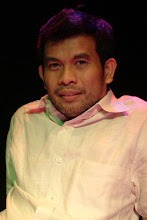From Wikipedia, the free encyclopedia
The German Tanztheater ("dance theatre") grew out of German expressionist dance. The term first appears around 1927 to identify a particular style of dance emerging from within the new forms of 'expressionist dance' developing in Central Europe since 1917. Its main exponents include Rudolf Laban, Kurt Jooss, and Mary Wigman. The term reappears in critical reviews in the 1980s to identify the work of primarily German choreographers students of Jooss (such as Pina Bausch and Reinhild Hoffman) and Wigman (Suzanne Linke).
Tanztheater is more than a mere ‘blend’ of dance and dramatic elements. Both Birringer (1986) and Schlicher (1987) argue that the particular artistic and historical context of post war Germany informs the genesis of Tanztheater in the 1970s.
See also:
Birringer, Johannes 1991. Theatre, Theory, Postmodernism. Bloomington: Indiana University Press.
Hoghe, Raimund 1980. The Theatre of Pina Bausch. Drama Review. 24(1), 63-74.
Markard, Anna 1985. Jooss. Cologne: Ballet Bühnen Verlag.
Preston-Dunlop Valerie & Sánchez-Colberg, Ana 2002. Dance and the Performative. London: Verve.
Ana Sanchez-Colberg (1992) Traditions and Contradictions: A Choreological Documentation of Tanztheater from its Roots in Ausdruckstanz to Present. London: Laban Centre.
Sánchez-Colberg, Ana 1992. You can see it like this or like that. In Jordan, S and Allen, D.(eds) Parallel Lines. London: Arts Council.
Sánchez-Colberg, Ana 1993. You put your left foot in…then you shake it all about… Excursions and Incursions into Feminism and Bausch’s Tanztheater. In Thomas, Helen (ed.). Dance, Culture and Gender London: Routledge, 151-163.
Sánchez-Colberg, Ana 1996. Altered States And Subliminal Places: Charting The Road Towards A Physical Theatre. Performance Research, 1( 2).
Schlicher, Susanne 1987. Tanztheater Traditionen und Freiheiten. Hamburg: Reinbeck Verlag.
Tanztheater:
The most universal definition that the term Tanztheater ("dance theater") brings to mind is: the union of genuine dance and theatrical methods of stage performance, creating a new, unique dance form (especially in Germany), which, in contrast to classical ballet, distinguishes itself through an intended reference to reality.
The term had already been used by members of the German expressive dance movement of the 1910s and 1920s who wished to distance themselves from the traditions of classical ballet. Rudolf von Laban, the most important theorist of expressive dance, used the term for the dance culture he was to create. Through dance, he hoped to unite all art media and achieve an all-embracing, radical change in humankind. According to Laban, dance theater, which he understood to be an interdisciplinary total art form, should allow one to be drawn into an inherent eurythmic harmony which is then expressed on stage.
Norbert Servos, "Tanztheater" in International Dictionary of Modern Dance, Detroit: St. James Press: c1998
The name "tanztheater" refers to a performance form that combines dance, speaking, singing and chanting, conventional theater and the use of props, set, and costumes in one amalgam. It is performed by trained dancers. Usually there is no narrative plot; instead, specific situations, fears, and human conflicts are presented. Audiences are stimulated to follow a train of thought or to reflect on what the tanztheater piece express. It has been described as a new twist on an old form: German Expressionism.
Roland Langer, "Compulsion and Restraint, Love and Angst", Dance Magazine 58, no. 6 (1984)

No comments:
Post a Comment